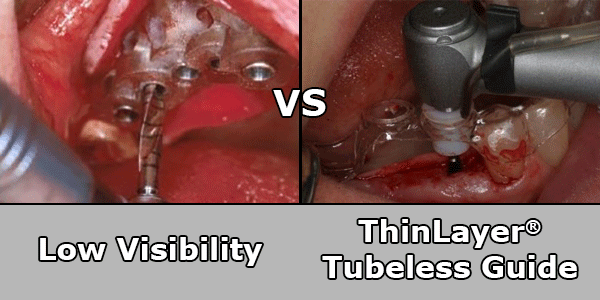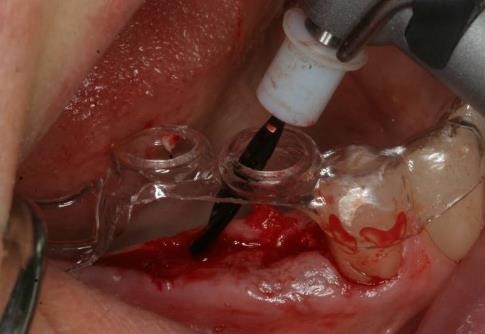7 Things to Look for in a Surgical Guide
It is important to note that not all guides are created equal. Intuitively, one might think that any guide is better than no guide, but flawed surgical guides can present serious consequences during surgery. In a 2008 Harvard Business School study, 18% of surgical guides were found to be unusable due to poor visibility, access, or retention. Here are seven things you should look for in an ideal surgical guide:
1. Fits without needing adjustment
The guide should be well fitting without needing to adjust or burr the guide.
2. Stable and Retentive
Traditional printed or milled guides may “rock” with poor retention due to undercuts and multiple paths of insertion in the arch.
3. Allows Visibility to the Surgical Site
4. Allows Physical Access to the Surgical Site
5. Works with Limited Vertical Clearance
The ThinLayer Tubeless Guide allows for an angled entry that will provide the correct trajectory when vertical clearance is tight.
6. Allows You to Change the Entry Point if Needed
The Tubeless guide allows you to easily visually verify your entry point and change if needed.
7. Minimal Bulk




Comments are closed.